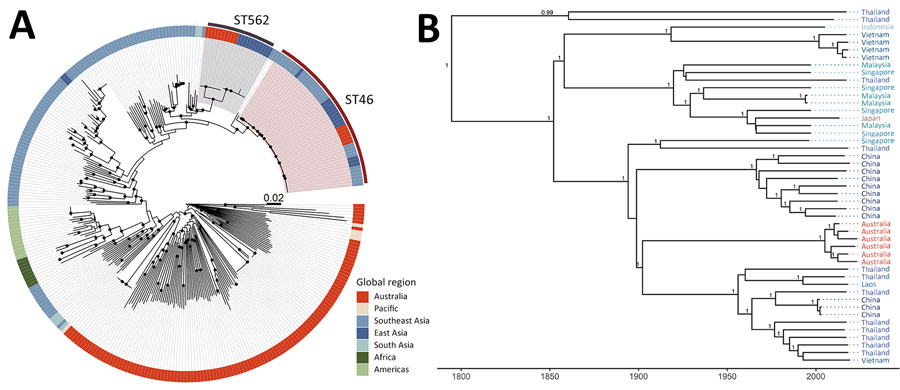Volume 31, Number 2—February 2025
Research Letter
Burkholderia pseudomallei Sequence Type 46 Transmission from Asia to Australia
Figure

Figure. Phylogenies of Burkholderia pseudomallei ST46 shown in an investigation of B. pseudomallei ST46 transmission from Asia to Australia. A) Midpoint-rooted maximum-likelihood global phylogeny; B) maximum clade credibility tree. Trees include genomes collected as part of the Darwin Prospective Melioidosis Study in Darwin, Northern Territory, Australia, and others available in public sources (Appendix 1 Table). Black circles indicate nodes with an approximate likelihood ratio >95 and ultrafast bootstrap >95. Labels indicate nodes with posterior support >0.8. ST, sequence type.
Page created: December 13, 2024
Page updated: January 31, 2025
Page reviewed: January 31, 2025
The conclusions, findings, and opinions expressed by authors contributing to this journal do not necessarily reflect the official position of the U.S. Department of Health and Human Services, the Public Health Service, the Centers for Disease Control and Prevention, or the authors' affiliated institutions. Use of trade names is for identification only and does not imply endorsement by any of the groups named above.